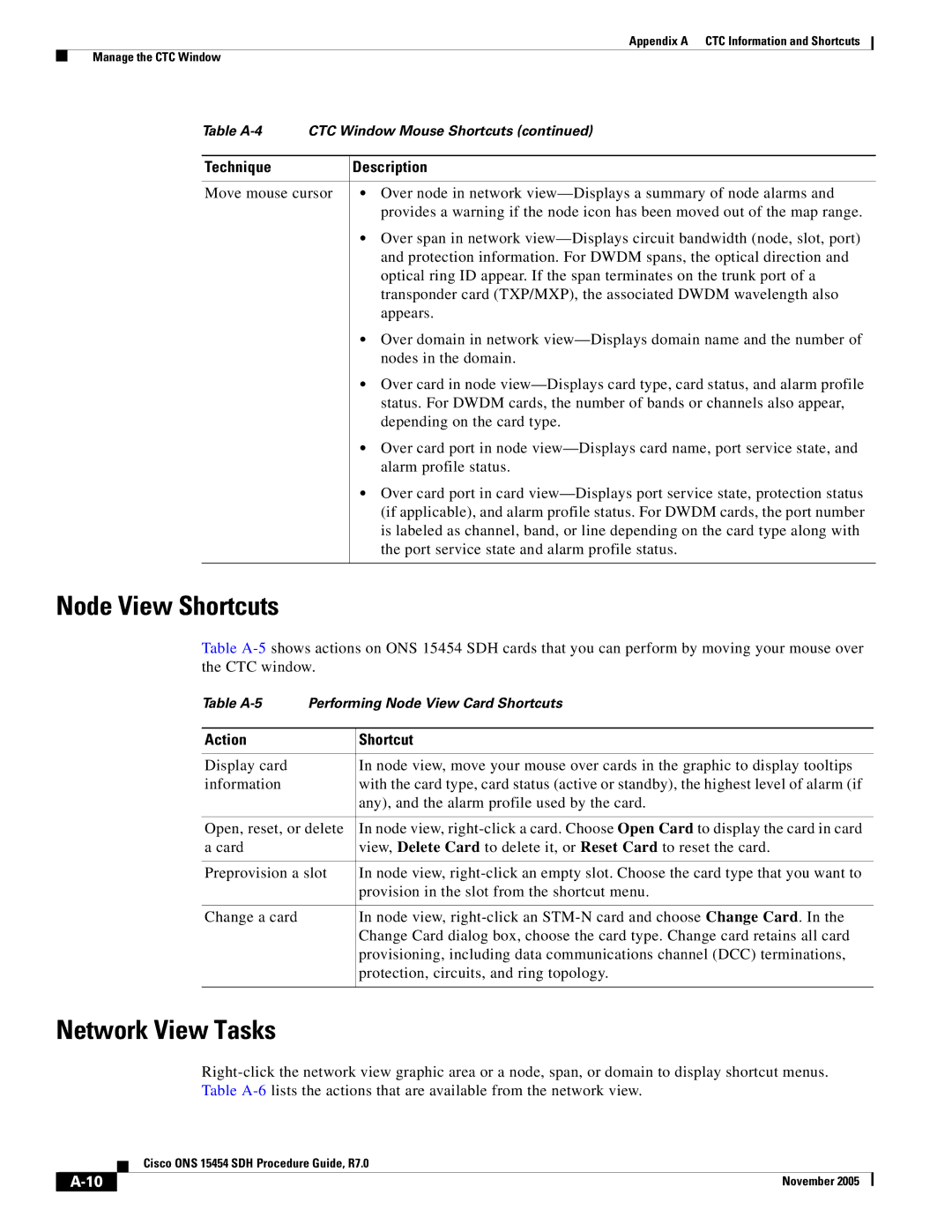ONS 15454 SDH specifications
The IRiver ONS 15454 SDH is a sophisticated platform designed for the seamless transmission of data, voice, and video across telecommunications networks. This high-capacity system plays a pivotal role in Service Providers' efforts to deliver efficient and reliable services. Its architecture is designed to support a range of applications, making it an excellent choice for both regional and long-haul network deployments.One of the key features of the ONS 15454 SDH is its scalability. The system can be easily expanded to accommodate increasing traffic loads, allowing operators to manage future demands without requiring a complete overhaul of their infrastructure. This scalability is facilitated through modular components that can be added or upgraded as needed.
The technology behind the ONS 15454 includes a robust cross-connect architecture, ensuring high availability and redundancy. This architecture reduces latency while maintaining signal integrity, which is crucial for time-sensitive applications such as real-time video streaming and voice over IP. The system provides seamless switching capabilities, allowing for dynamic rerouting of traffic in the event of a network failure, thereby enhancing overall reliability.
The ONS 15454 supports various SDH (Synchronous Digital Hierarchy) protocols, which are essential for the efficient transport of digital data across the network. By utilizing SDH standards, the system ensures compatibility with other telecommunications equipment, making it a versatile option for network operators.
Another notable characteristic of the ONS 15454 is its extensive management capabilities. The platform features user-friendly network management systems that allow operators to monitor performance, configure settings, and troubleshoot issues in real time. This proactive approach to network management minimizes downtime and enhances service delivery.
Moreover, the IRiver ONS 15454 SDH is designed with energy efficiency in mind. Its hardware components utilize advanced power management technologies, reducing the overall power consumption and operational costs for telecommunications providers.
In summary, the IRiver ONS 15454 SDH stands out with its scalability, robust architecture, comprehensive SDH support, and advanced management features. These attributes make it an ideal solution for telecommunications operators looking to enhance their service offerings in a competitive market, while also preparing for the future demands of a rapidly evolving digital landscape.

